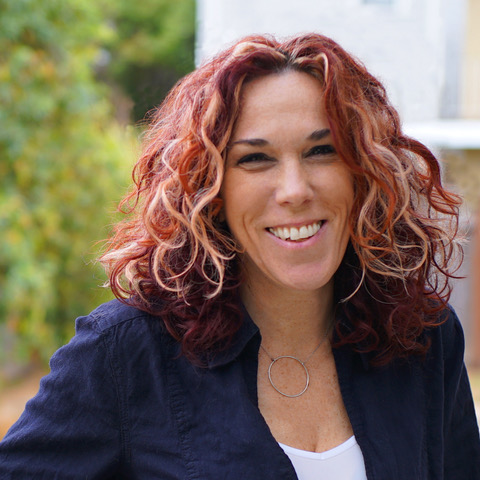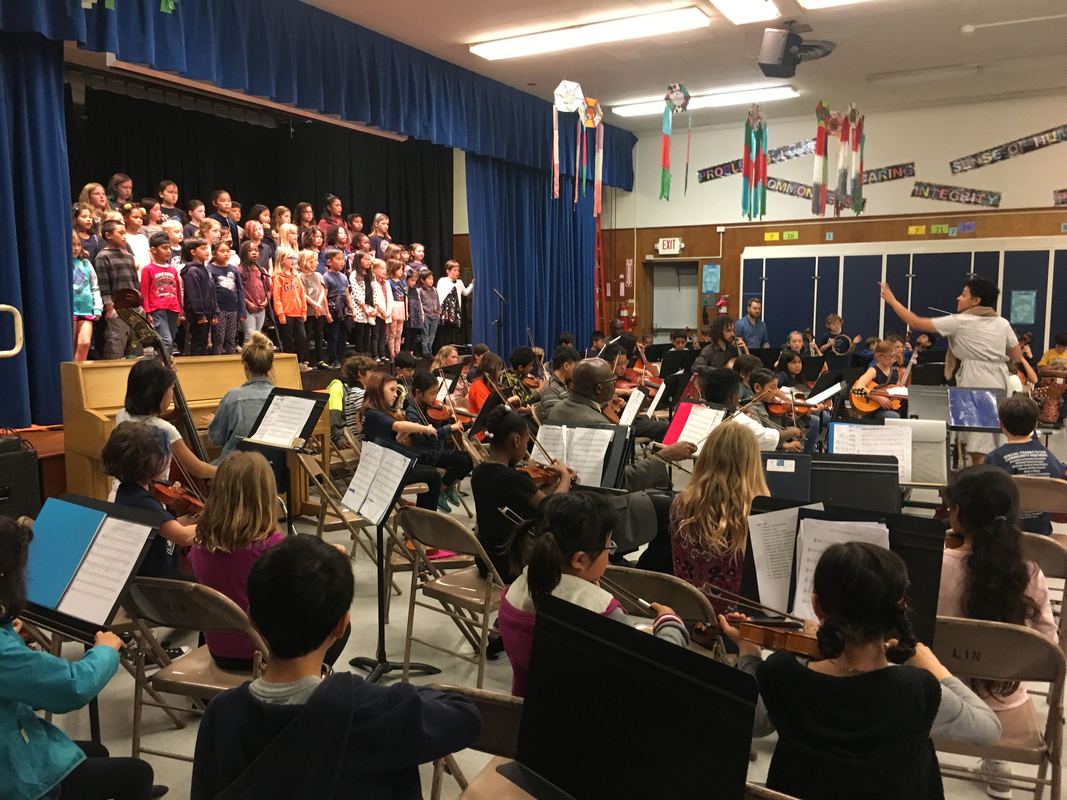 Lorrie Murray, Northeastern Alumna.
Lorrie Murray, Northeastern Alumna.
Northeastern alumna Lorrie Murray is the Founder and Executive Director of Bay Area Music Project, a non-profit after-school music education program that serves the social, emotional, cultural, and academic needs of children. Inspired by El Sistema, a music-education program founded in Venezuela in the mid-1970s, Lorrie founded the organization almost six years ago, and the response has been incredibly positive, now growing to more than 150 students. After having spent more than 20 years in the music industry herself, she recognized and understood the power of music – and its ability to build connections and change lives, to provide an escape and creative outlet, or to open up new opportunities and experiences.
Despite how central and important music had been to Lorrie’s life and career, however, she realized that access to it was limited for many people, particularly children, who could perhaps benefit from its power the most. And this lack of access was not just limited to music; it spanned across all of the arts.
“When my time in the music industry was winding down, and I was focused on my children, I was really understanding what the limitations of funding are for the arts. I was sending my children off to school where clearly the arts were underrepresented and not at the forefront of their learning,” explained Lorrie, who majored in Visual Media Design with a minor in Film Theory at Northeastern.
I studied the arts, and I spent so many years in the music field, so I couldn’t wrap my head around how something so vital was not even offered to these young students.
Having recognized this challenge, Lorrie embraced the opportunity to get involved when her children’s school went through a transformation to become arts-integrated. She worked with a team of teachers, parents, and administrators to write the proposal for the arts-integrated curriculum, identifying how to use the arts to demonstrate the incredibly diverse student body’s learning and progress.
“I became heavily involved in the process of reinventing the school when I asked, ‘where does music come into this?’ Up to that point, visual arts had been the main priority,” said Lorrie. “Around this time, I watched an episode of 60 Minutes that featured El Sistema, and how the program was changing lives across Venezuela. It was like a lightbulb went off that this was what I wanted to implement here.”
The segment talked about El Sistema’s creator – Venezuelan educator, musician, and activist José Antonio Abreu – as well as one of the program’s success stories, Gustavo Dudamel, current musical director of the Los Angeles Philharmonic. The story was inspiring and relevant for Lorrie, and she put the wheels in motion to establish a high-quality and empowering after-school music education program in the San Francisco Bay Area. This is where Bay Area Music Project (BAMP) comes in, with the mission to provide an opportunity where all children—regardless of circumstances—can thrive socially and academically through music education.
Our goal is to allow students to embrace music as a way to become better, more confident, more empathetic people.
“Music excellence is a happy byproduct; it is more about giving a child the tools that make them successful later in life,” Lorrie continued. “Now, more than ever, in an age where empathy gets lost in a technical, cold world with so much online, it is crucial for students to understand the importance of a human connection.”
Creating music is an effective tool in teaching students these important life skills. For example, when a group is playing instruments together, they must be in agreement, working together to overcome challenges and resolve conflict.
“You have to listen to one another,” Lorrie added. “During my days in the music industry, it was all about listening, absorbing information, and understanding what each person is bringing to the collective voice and sound. Creating music is part of a larger social and emotional process; when kids are interacting with each other on a creative level, it can take them out of their current mindset and be incredibly uplifting.”
BAMP operates 16 hours per week, 38 weeks a year providing elementary school children access to intensive music training, instruments, academic support, and a nutritious snack. Students start by building a baseline musical knowledge and appreciation in kindergarten, and move on to exploring their own voices and various instruments in the first grade. After having the chance to try different instruments and genres, students decide what they want to focus on – and are encouraged to stick with this instrument, or at least this instrument family, for their duration in the program. The program includes instrumental instruction in violin, viola, cello, bass, percussion, ukulele, choir, orchestra, electronic music composition and production, and theater arts – so the options and opportunities are vast.
In running this organization, one highlight for Lorrie so far has been watching a group of six advanced cello students play alongside Yo-Yo Ma, one of the world’s best-known cellists. He was doing a keynote speech at a nearby conference, and one of the event’s organizers found BAMP and reached out.
“It started as an opportunity to have the kids meet Yo-Yo Ma, but evolved into a much bigger opportunity,” Lorrie added. “They were asked to bring their cellos and had the chance to actually play with Yo-Yo Ma backstage. He challenged them to feel the music, and you could see the students improving just by having this one session with him. After he heard them play, he then asked if the group would play with him on-stage! If you had asked me five years ago if this experience was going to be a reality, it was certainly on my wish list, but I never thought it would be something we could bring to fruition.”
This experience will certainly have a lasting impact on the students. You can watch the video of their performance here.
As a student at Northeastern, Lorrie worked for Boston Survey Consultants developing marketing and design plans, which gave her experience in working in an office setting and sharpened her marketing skills. She was also active on campus, serving as the Vice President of what was known then as the Art and Architecture Society, a student organization that facilitated collaborations between students in the arts and architecture departments. We look forward to continuing to see how the future unfolds for the Bay Area Music Project, and hearing about all the exciting adventures to come!


